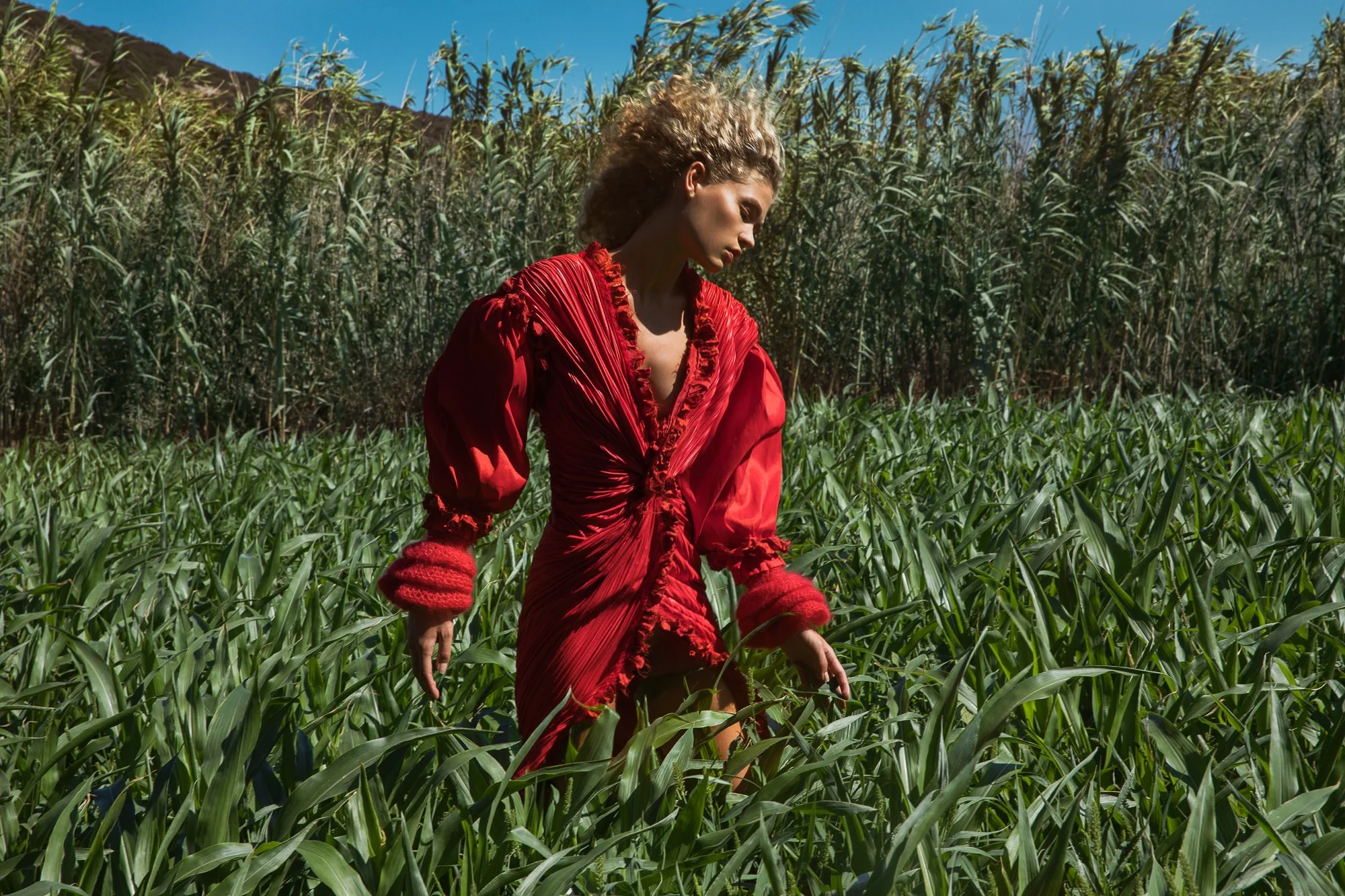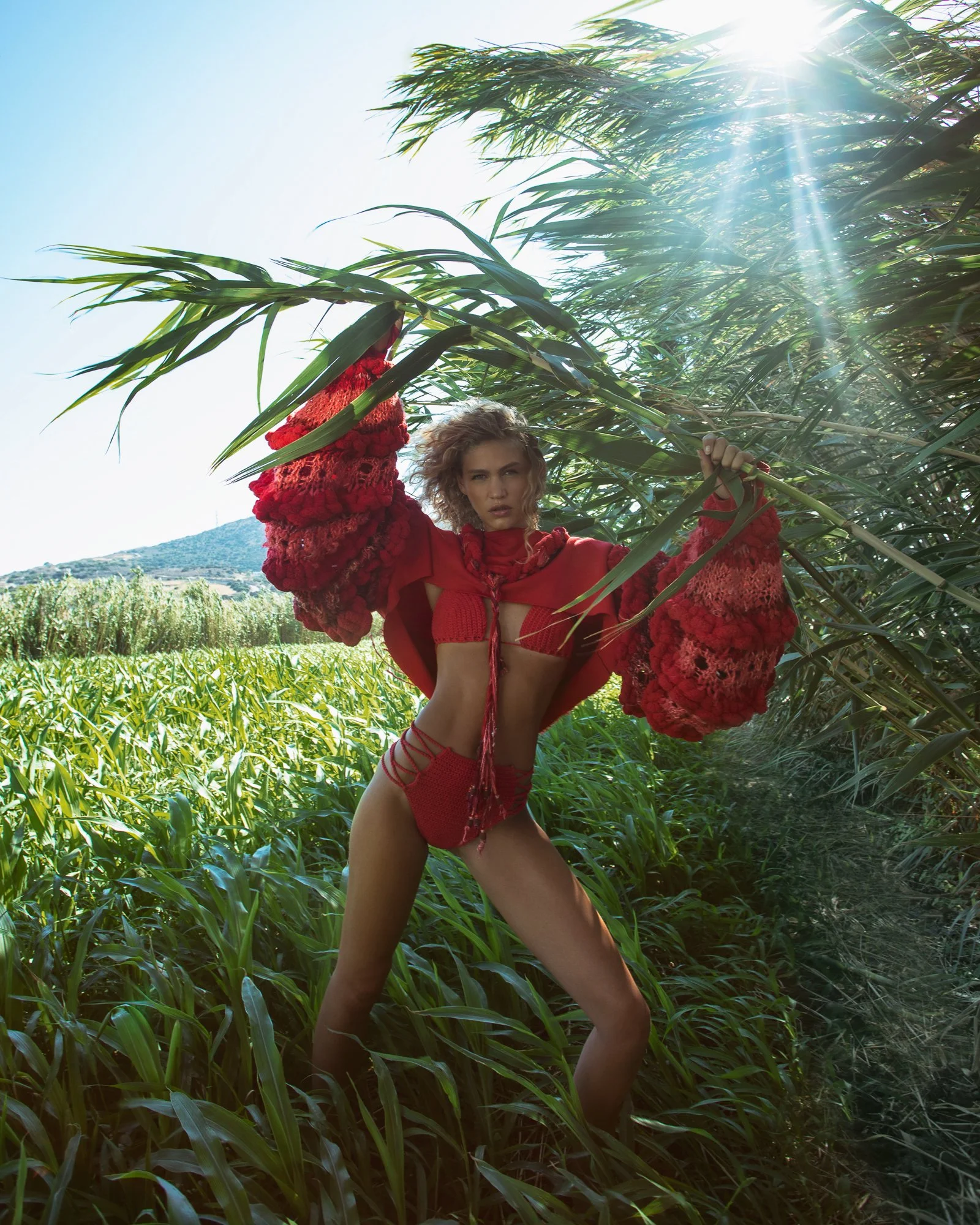Breaking Boundaries in Fashion: The Chrysalis Lab Leads the Upcycling Revolution
In today's fashion industry, which grapples with the impact of climate change, one brand is redefining sustainable fashion and breaking boundaries. The Chrysalis Lab, founded by award-winning celebrity stylist Emma Trask, is revolutionizing the way we approach fashion by upcycling existing garments and vintage designer clothing.
Upcycling is an important concept in the fashion industry due to its potential to reduce environmental impact. The fashion industry is notorious for its contribution to pollution, waste, and the depletion of natural resources. From the production of textiles to the disposal of unwanted garments, the industry's practices have detrimental effects on the environment. However, upcycling presents a solution by breathing new life into existing garments, reducing the demand for new production, and minimizing waste.
The negative effects of apparel in landfills are staggering. According to the Ellen MacArthur Foundation, a garbage truck full of textiles is landfilled or burned every second, releasing greenhouse gases and contributing to climate change. The Chrysalis Lab plays a vital role in diverting textiles from landfills by upcycling garments, thus reducing environmental impact and promoting a circular economy.
With a mission to foster sustainability and conscious consumption, The Chrysalis Lab invites clients to participate in the transformative upcycling process, known as "crystallization". This collaborative effort breathes new life into garments, promoting creativity, environmental awareness, and embracing sustainable fashion practices.
"I've been collecting vintage couture from every era, from the 50s, 60s, and 70s. Each piece holds a memory, a chapter from a bygone era. With a few rare exceptions, I'm not one to simply pluck things off the shelves and wear them,"
says one satisfied client.
Emma's Custom Colab process commences by assisting her clients in identifying the ideal piece within their closet for Chrysalizing. Once this step is established, she engages in a discussion about their objectives with the piece – how, where, and when they intend to wear it, as well as any specific design parameters that need addressing, such as desired color palette, covering imperfections, adjusting fit, enhancing existing elements, or introducing new ones.
Each piece presented to Emma speaks to her, triggering a shift in perspective towards a more textural and three-dimensional vision. She maintains an extensive collection of sustainable yarns, with current favorites including banana silk yarns crafted from upcycled silk saris, cotton yarns repurposed from denim, and a more robust twine/jute combination, hand-dyed and spun by a mother-daughter team from an Iowa farm. In her materials library, she also houses various found objects like old blankets, scarves, recycled denim, belts, and vintage jewelry, which she draws upon if needed.
Emma initiates the process by laying out the garment and selecting yarns and materials that breathe life into it. If she doesn't find what she needs in her library, she embarks on a quest to source specific items from her yarn suppliers or seek out particular vintage materials.
Following this, she collaborates with an artisan from her team whom she deems best suited to bring her vision for the garment to fruition. This could be one of her crochet artists, embroiderers, sashiko experts, rope artisans, or a master knitter. She endeavors to keep each piece assigned to a single artisan until completion, although for more intricate projects, it may involve multiple artisans.
The Chrysalization process commences, where they experiment with various techniques using the chosen materials until the piece begins to evolve and come to life. This transformative journey parallels a butterfly emerging from its cocoon, which inspired the name of Emma's brand.
"In the depths of fashion's excess, I found my purpose," says Emma Trask. "After witnessing the mountains of waste and the relentless cycle of fashion consumption, I knew it was time for change."
Depending on the client's level of involvement, Emma sometimes shares work-in-progress pictures to gather feedback. However, more often than not, they create and share images of the finished creation before sending it back to the client or arranging a presentation fitting.
"The joy Emma derives from witnessing her clients' astonishment and delight at the enchanting transformation of a piece, which may have once seemed old and uninteresting to them, is an enduring source of inspiration propelling her towards a future of sustainable fashion creation,"
expresses another satisfied client.
Drawing inspiration from the butterfly's metamorphosis, Emma employs artisan techniques such as knitting, crochet, rope art, and macramé to create unique, one-of-a-kind pieces that epitomize conscious fashion.
"I love how Emma wove a narrative that celebrates the beauty of slow fashion, a defiant stand against the relentless pace of trends.”
For more information about The Chrysalis Lab and to explore its collection of unique, repurposed fashion, please visit their website at https://thechrysalislab.com.
Emma Trask, founder of The Chrysalis Lab, began her career as a freelance fashion stylist in New York City before establishing herself as a renowned celebrity stylist in Los Angeles. With an impressive portfolio of styling work for A-list celebrities, Emma received a Hollywood Style award for her costume designs for The CW Network's relaunch of the hit series Melrose Place. Her transformative shift in perspective and beliefs led her to establish The Chrysalis Lab, a brand that offers limited edition designs and personalized collaborations, catering to eco-conscious individuals who seek groundbreaking and exclusive pieces while honoring the environment. Sources:
HOW DO YOU FEEL ABOUT FASHION?
COMMENT OR TAKE OUR PAGE READER SURVEY
Featured















Miami Art Week 2025 Powered by Art Hearts Fashion closed out the year with a high-impact, citywide series of runway shows, designer debuts, and star-studded events across Miami’s most iconic venues, celebrating global creativity, inclusivity, and the intersection of fashion, art, and culture.